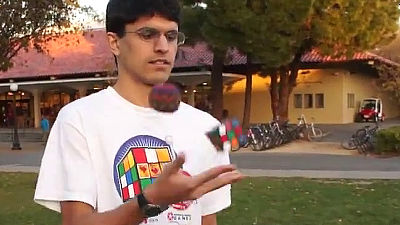A physicist who seriously studied `` perfect way of woking '' when frying fried rice appeared

Despite the very simple cooking process of `` frying rice and ingredients with oil '', it is difficult to make fried rice well, and when I actually made it, I said that `` rice became choppy instead of becoming smashed '' Many people should have experienced it. A physicist presented the research results on the “how to shake a wok” when frying such fried rice.
The physics of tossing fried rice | Journal of The Royal Society Interface
Georgia Tech physicists unlock the secret to perfect wok-tossed fried rice | Ars Technica
https://arstechnica.com/science/2020/02/georgia-tech-physicists-unlock-the-secret-to-perfect-wok-tossed-fried-rice/
Huntan Ko, a graduate student studying under Dr. David Who of Georgia Institute of Technology , published the research results on how to shake woks. Dr. Fu says that the 2015 Ignobel Physics Award in the study that `` almost all mammals can empty the bladder within 21 seconds (error plus or minus 13 seconds) '' is called `` wombats generating cubic poo '' He is a well-known physicist who has won the 2019 Ignobel Physics Award for his research. Dr. Hu and Ko said that one day they discovered that they were interested in the physics of stir-fried Chinese dishes, among other dishes.
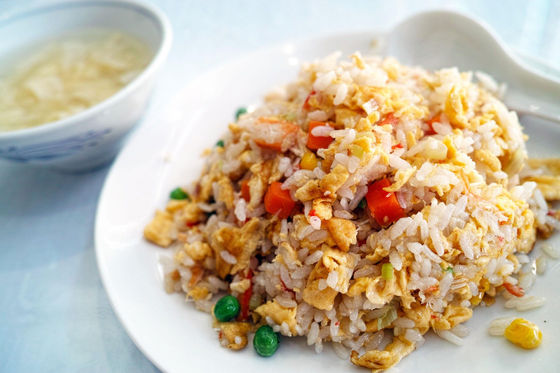
The two chose fried rice, which has a history of about 1500 years, as a research topic among stir-fried Chinese dishes. Fried rice is a dish that is also known as a cooking process in which a wok is shaken to stir the contents while stirring and frying. The reason for shaking the wok is that sugar is easily burnt during the
However, woks are heavy, and if you shake them constantly, your body will be strained. Past research has shown that about 64.5% of Chinese chefs report chronic shoulder pain. For these reasons, they thought that studying the exercises about shaking woks could reduce the burden on the chef.
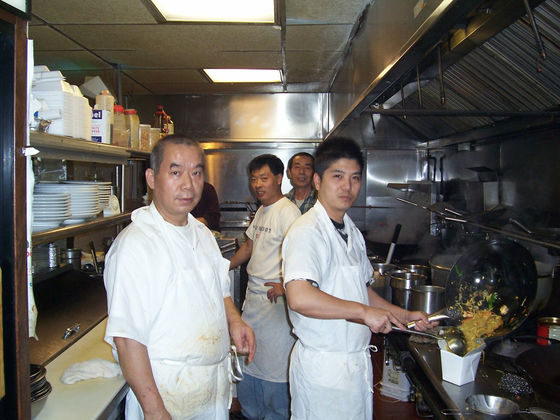
by
In 2018 and 2019, they toured five Chinese restaurants in Taiwan and China to film chefs making fried rice. The series of steps of `` friing fried rice '' is divided into processes of `` preheating of wok '', `` sequential input of ingredients '', `` stirring with a spatula '', `` shake the pan '', and the shoulder is the most burdened We analyzed the process of “shaking the pan and mixing”. In addition, they said that it was necessary to explain that it was not a TV interview but a scientific research interview.
Analysis of a total of 276 'shaking and mixing' processes revealed that the chef shakes the pan back and forth like a seesaw. The following image shows the process of shaking a wok in fine detail. (B) in the upper left is the initial movement, in which the wok is lifted to the front with the near side of the stove as the starting point. The next operation (c) in the upper right corner shows that the wok is returned to horizontal. From there, you can see that the wok is tilted in the opposite direction to the initial movement by lowering the front side (d). Finally, when the wok is returned to horizontal (e), the contents are mixed. The time required for this series of operations is one third of a second, and the speed tends to increase as the number of times of shaking increases.
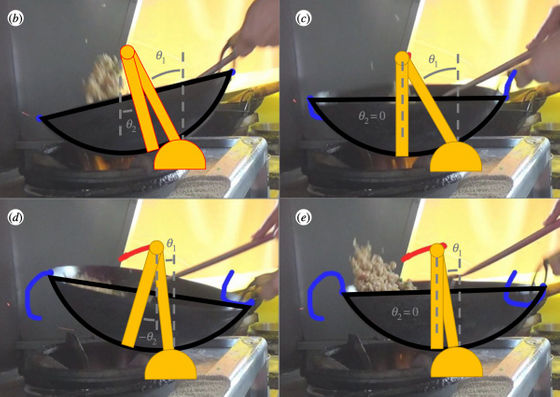
They modeled the movement of the wok by creating a relational expression between angle and time, assuming that the two variables in the series of movements when shaking the wok are angle and time. This model can predict the 'trajectory of fried rice' by substituting the percentage of fried rice floating in the air when the wok is shaken, the height of the fried rice floating, and the angle of the pot.
The two people use this model, and when shaking the wok, the two actions of `` tilting the wok forward '' and `` tilting the wok backward '' are independent, and they are moving at the same
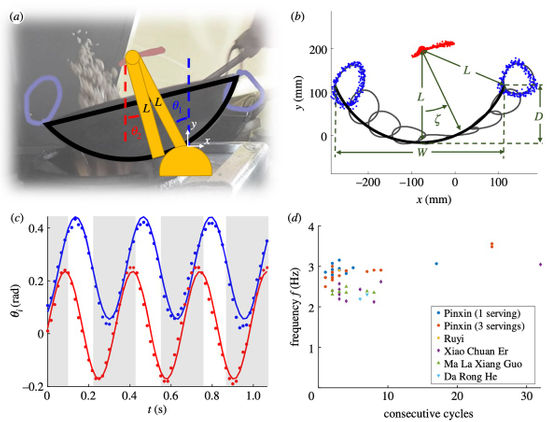
The two argue that this study will be useful for things like 'robots for stir-fry'. According to technology news site Ars Technica, there seems to already exist a robot that stirs fried rice while stirring it with a pot that moves like a rotary drum or seesaw, but none of them could `` float fried rice '' It was not an ideal fried rice. Dr. Fu could help the chef if he could automate the wok movement. '
Related Posts:


